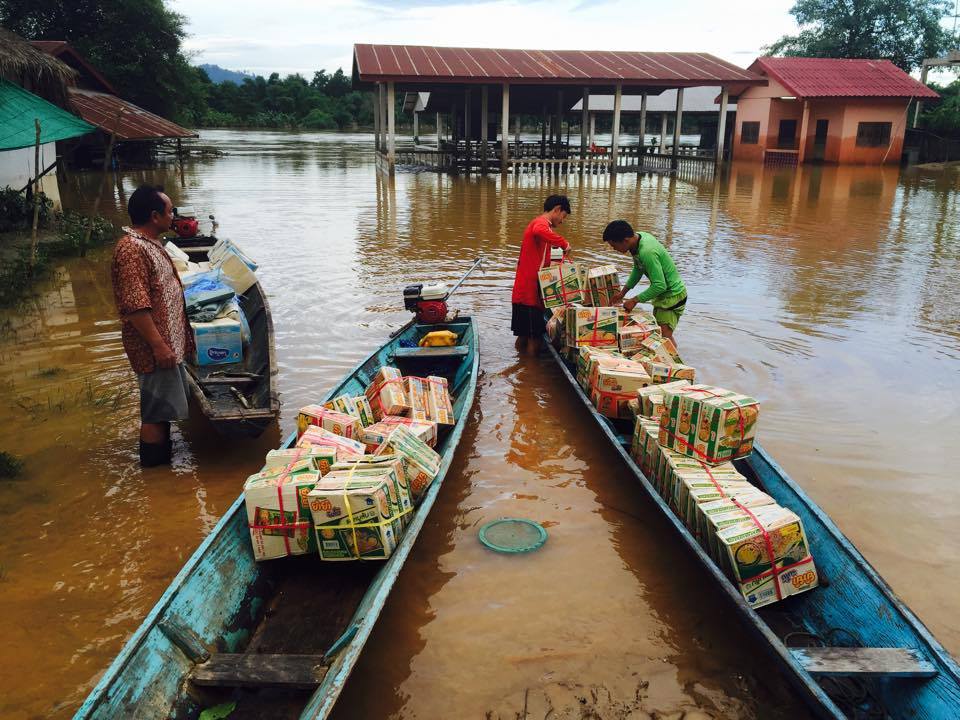Recovering after the flooding
Every morning, Jenny, 11, waters her home garden. “I feel happy every time that I come to my garden because I love the green. It makes me feel renewed,” she said.
The garden is in a much better condition today compared to last October when the family’s rice farm was hit by flooding.
“Our rice field and our crops were damaged with the floods,” said Jenny’s mother Khone, 39. “My rice fields used to give good harvests, around 60-70 sacks. This year we only got 19 sacks. This is really not enough to feed our family.”
Jenny recalled the terrifying night the floodwaters came in.
“It was around 10pm and my parents and I were staying on our farm,” she said. “The water continued to get higher, almost reaching our floor. Then my parents moved us into our house in the village. The village was flooded, too, but not too seriously.” Jenny continued, “The water became red in colour and was flowing very fast and strong. I was very afraid that the water would wash me away.”
Khone rushed to take care of her three children. “During the flood, I worried about our animals, our plantation and crops, but one thing that was more important was my children,” said Khone. “At first, I brought my children back to the village and called our council to help us move our animals and stuff in our house. It was already midnight. I didn’t think that water would be this high because in the past when it flooded, the water didn’t get to a high level.”
Unfortunately, they couldn’t save their livestock.
“We lost our rice plantation, crops and animals,” Khone said. “We raised chickens and ducks—more than 200. But all were gone with the flood.”
Viengkham Lorvanxay, head of the village’s Women’s Union, said the flood affected the livelihoods of the villagers, most of whom are farmers.
“The water came spilling over the river into my village and flooded the village,” she said. “All of the 365 people in the village went to higher places. At its highest level, the water was about five metres above our village. It lasted for three days. Now the village is accessible by road again. Still, all the rice fields and crops were damaged and some animals were lost. We still need support to recover from this disaster.”
World Vision already had programs in place in the community and helped with the emergency response.
“We supported 246 households (about 1,257 people) with hygiene kits, mosquito nets, shelter materials and kitchen equipment,” said Kingsada Sengsavang, humanitarian emergency affairs coordinator for World Vision International Lao PDR. “These kits are enabling better sanitation and protection for these vulnerable households. With these items, we are helping people to rebuild their lives in a way that makes them stronger for the future.”
Jenny’s family benefited from that support.
“We received rice seeds and seven kinds of crop seeds,” said Jenny’s mother. “After we received those, my husband and I started to grow them and now we have nutritious food for our children. We save our time from foraging for food in nature. We can use our time to do other things, like earn income for our family.”
Jenny also does her part to take care of the new garden.
“After school I help my mother water the vegetables in our garden and on the weekend I also help her sell the vegetables to neighbours. I like to eat our vegetables because they are organic,” Jenny shared with smile.
The garden not only feeds the family, but the crops also help the family earn an income.
“I would like to thank World Vision and the government who have supported our communities to have a better life, especially since my family are healthy and have better life too,” Jenny’s mother added.
To respond to the needs of the affected, World Vision and the district government authority are distributing canned fish, noodles and clean water as supplementary food.

